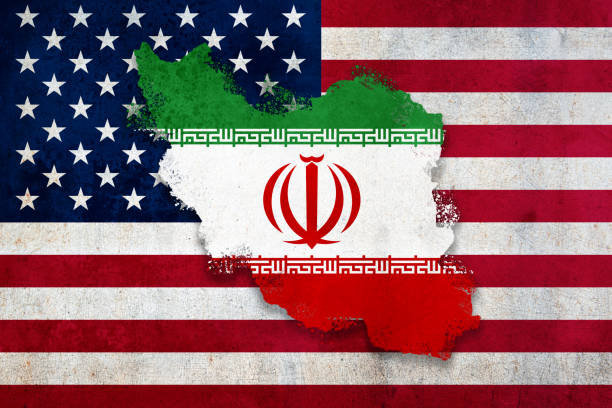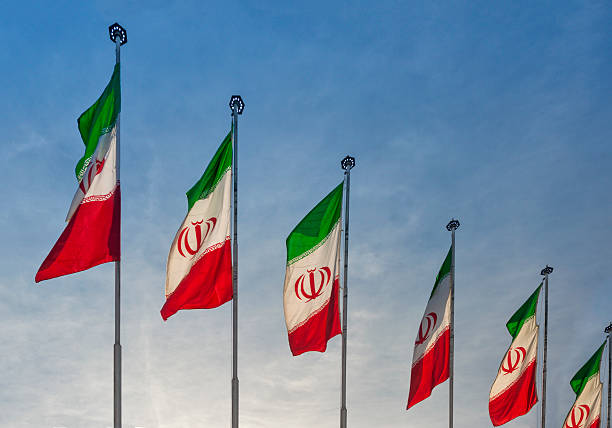U.S. Intelligence Report Contradicts Trump, Says Iran’s Nuclear Program Only Temporarily Set Back
A U.S. intelligence report finds Iran’s nuclear program was only temporarily set back by recent U.S. airstrikes, contradicting President Trump’s claims of total destruction.
 WASHINGTON, DC - JUNE 12: U.S. President Donald Trump takes questions after signing a series of bills related to California’s vehicle emissions standards during an event in the East Room of the White House on June 12, 2025 in Washington, DC. Members of Congress passed the bills using the Congressional Review Act and the effect would largely revoke the emissions standards enacted by the state of California.
WASHINGTON, DC - JUNE 12: U.S. President Donald Trump takes questions after signing a series of bills related to California’s vehicle emissions standards during an event in the East Room of the White House on June 12, 2025 in Washington, DC. Members of Congress passed the bills using the Congressional Review Act and the effect would largely revoke the emissions standards enacted by the state of California.A newly released U.S. intelligence assessment indicates that Iran’s nuclear program has only been delayed by a few months following recent U.S. airstrikes, contradicting President Donald Trump’s claims that the program was “totally obliterated,” according to two individuals familiar with the report.
The Defense Intelligence Agency (DIA) report, issued Monday, states that while the U.S. strikes on Iran’s Fordo, Natanz, and Isfahan nuclear sites caused significant damage, they did not result in the complete destruction of the facilities. The assessment undermines public statements made by Trump and Israeli Prime Minister Benjamin Netanyahu, both of whom had described the operation as having successfully dismantled Iran’s nuclear capabilities. The individuals spoke on condition of anonymity as they were not authorized to discuss the classified findings.
The report suggests Iran managed to relocate key components of its nuclear program before the strikes, including stockpiles of highly enriched uranium and essential centrifuges. Analysts found that the underground infrastructure at Fordo, despite the collapse of the entrance and damage to surrounding structures, remained largely intact following a barrage of 30,000-pound bunker-buster bombs delivered by U.S. B-2 stealth bombers.
Previous intelligence reports had warned that Iran’s deeply buried enrichment site at Fordo would be difficult to fully destroy. The latest assessment confirms that some critical elements, including centrifuges and uranium enrichment capabilities, likely survived the attack.
The White House strongly rejected the DIA findings. Press Secretary Karoline Leavitt issued a statement calling the report “flat-out wrong” and accused unnamed individuals of leaking classified intelligence to undermine the president. “Everyone knows what happens when you drop fourteen 30,000-pound bombs perfectly on their targets: total obliteration,” Leavitt said.
The CIA and the Office of the Director of National Intelligence (ODNI) declined to comment. The Israeli government has not released its own assessment of the damage.
Trump special envoy Steve Witkoff condemned the leak of the intelligence assessment during an appearance on Fox News, calling it “treasonous” and stating it should be investigated. He claimed the strikes had “deprived Iran of the ability to develop a weapon.”
President Trump has maintained in public posts and remarks that the Iranian sites were “totally destroyed” and said Iran would never rebuild its nuclear facilities. Netanyahu echoed this position in a televised statement, claiming the U.S.-Israeli operation had “brought to ruin Iran’s nuclear program” and praising Trump’s support as “historic.”
Despite these claims, intelligence and security analysts remain cautious. The DIA report indicates Iran preserved a portion of its 60% enriched uranium, which is below weapons-grade but can be quickly refined to 90% purity. A stockpile of 42 kilograms of uranium enriched to 60% is sufficient to produce a nuclear weapon if further enriched, according to the U.N. nuclear watchdog.
Vice President JD Vance defended the administration’s position, arguing that the strikes significantly degraded Iran’s ability to weaponize its uranium. “If they have 60% enriched uranium, but they don’t have the ability to enrich it to 90%, and... convert that to a nuclear weapon, that is mission success,” Vance said on Fox News. “That is the obliteration of their nuclear program.”
Experts caution, however, that Iran may still possess the materials and knowledge to restart its nuclear program. American satellite imagery provider Maxar Technologies reported that bulldozers and trucks were seen at Fordo on June 19, just days before the U.S. strikes. Subsequent images showed tunnel entrances sealed with dirt, potentially shielding equipment or concealing efforts to relocate assets.
Stephen Wood, senior director at Maxar, stated that trucks seen on June 19 may have been involved in moving enriched uranium out of the facility. Former U.S. intelligence analyst Eric Brewer said the movement of uranium and other equipment was “plausible,” noting that while uranium can be transported relatively easily, centrifuges are harder to move without damage.
Iranian Foreign Minister Abbas Araghchi informed International Atomic Energy Agency (IAEA) Director General Rafael Grossi on June 13 that Tehran would take “special measures” to protect its nuclear materials and equipment amid rising hostilities. The IAEA has since confirmed that Iran possesses sufficient enriched uranium for several bombs, though the leadership has not officially committed to weaponization.
Iran also announced the establishment of a third enrichment facility in Isfahan prior to the strikes. The IAEA’s Grossi acknowledged the site's existence but noted it was unclear whether the Isfahan complex and its tunnels remain operational following the joint Israeli-American strikes.
Kelsey Davenport, director for nonproliferation policy at the Arms Control Association, warned that Iran could now attempt to build a covert enrichment facility. “If Iran had already diverted its centrifuges,” Davenport said, “it can build a covert enrichment facility with a small footprint and inject the 60% gas into those centrifuges and quickly enrich to weapons grade levels.”
Still, Brewer emphasized that Iran faces major setbacks. “If Iran launched a covert nuclear program, it would do so at a disadvantage, having lost to Israeli and American strikes vital equipment and personnel that are crucial for turning the enriched uranium into a functional nuclear weapon."






.jpg)
Conversation